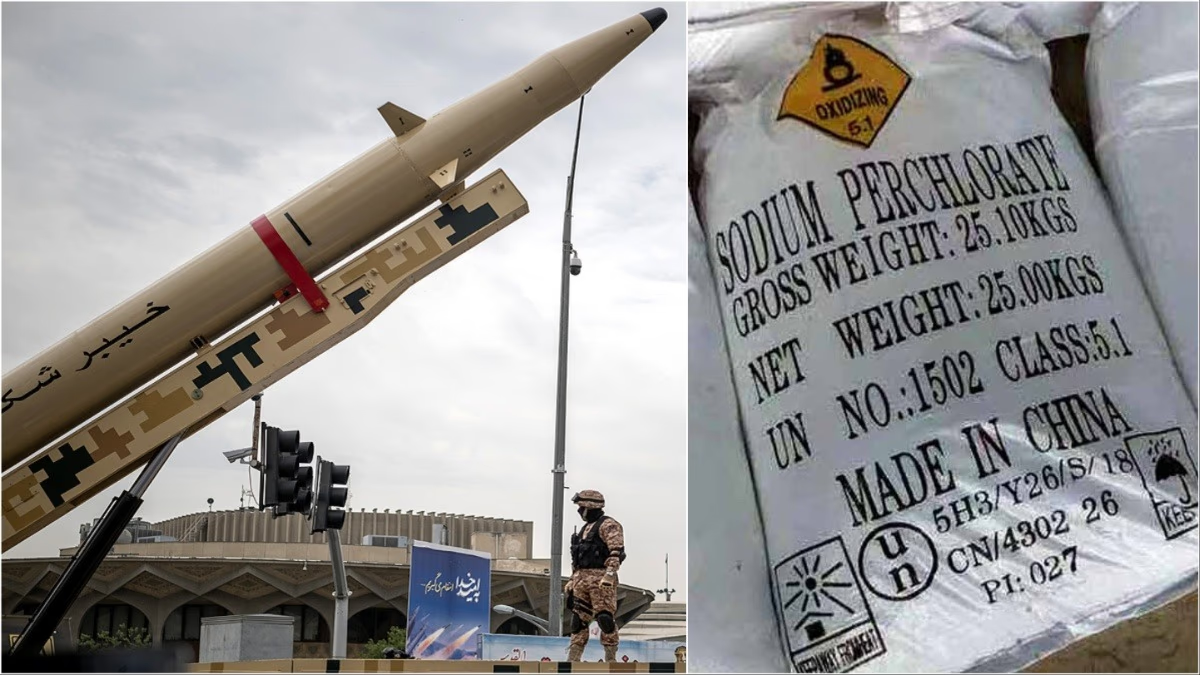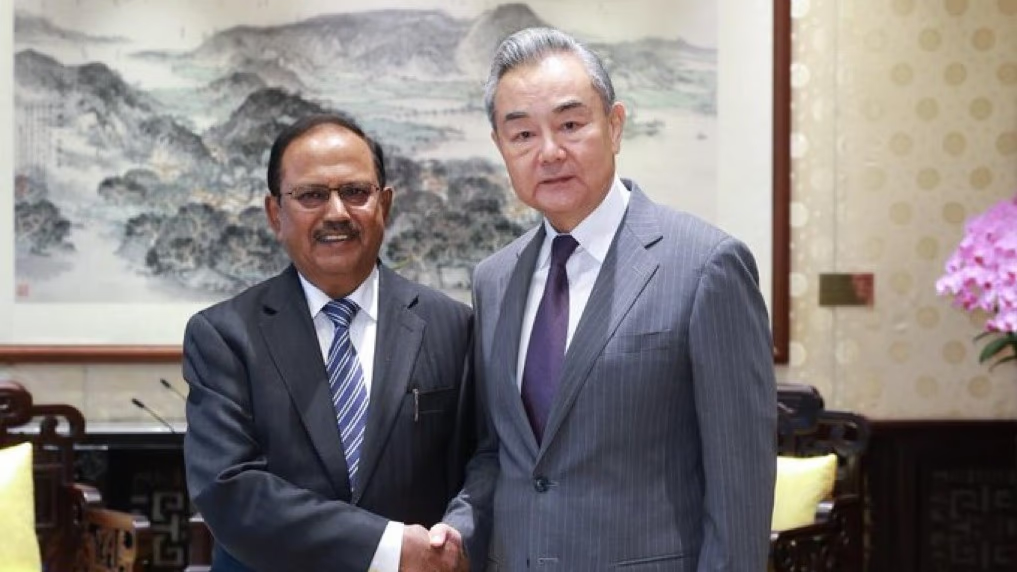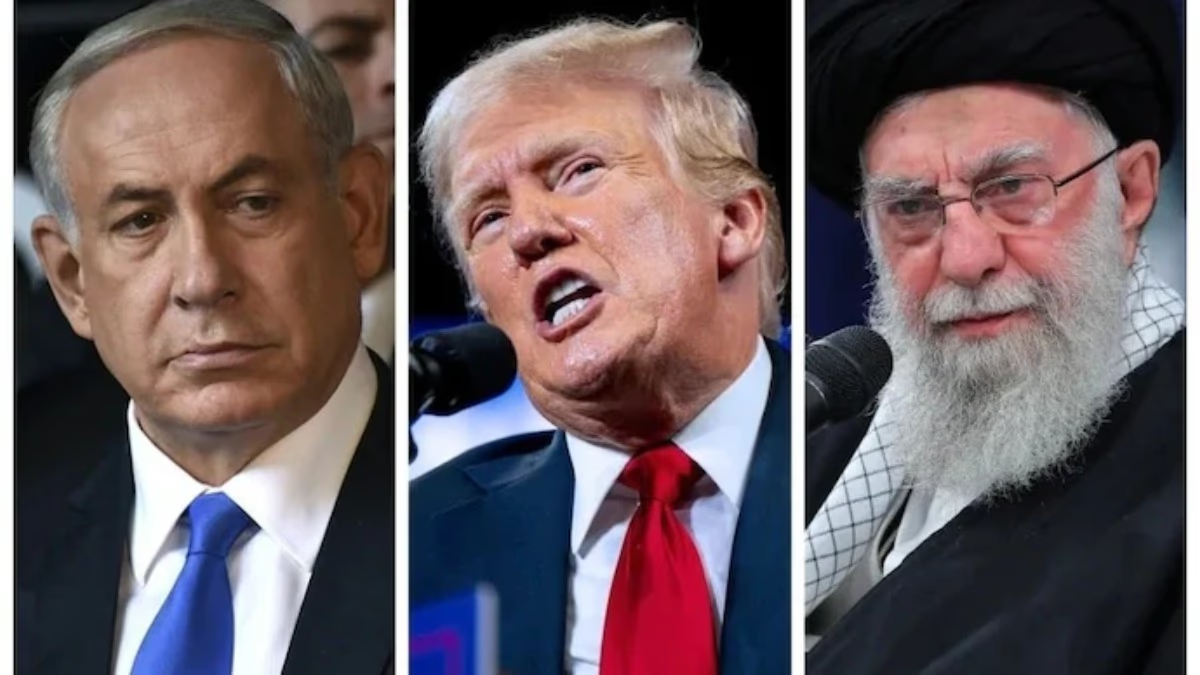Early in 2025, a startling revelation captured the world’s attention: China shipped 1,000 tons of sodium perchlorate to Iran. This chemical, crucial for making rocket fuel, could enable Iran to produce 260 Khyber Shekan or 200 Hajj Qasem medium-range ballistic missiles.
According to a report by the
on January 22, 2025, this shipment was intended for the Islamic Revolutionary Guard Corps (IRGC). It was transported to Bandar Abbas via two Iranian vessels, MV Golban and MV Jayran. Let's explore the role of sodium perchlorate and the specifications of the Khyber Shekan missile. Security officials from two Western nations revealed that Iran's cargo ships, Golban and Jayran, were set to depart China carrying 1,000 tons of sodium perchlorate.
The report stated that this sodium perchlorate can create 960 tons of ammonium perchlorate, contributing 70% of the solid rocket propellant. With this, 1,300 tons of propellant could be prepared, enough for 260 medium-range Iranian missiles like the Khyber Shekan or Hajj Qasem.
Golban loaded 34 containers while Jayran took on 24. These ships initiated their three-week journey from Taicang port (north of Shanghai) to Bandar Abbas. Both vessels belong to the Islamic Republic of Iran Shipping Lines (IRISL), associated with the IRGC and under US sanctions.
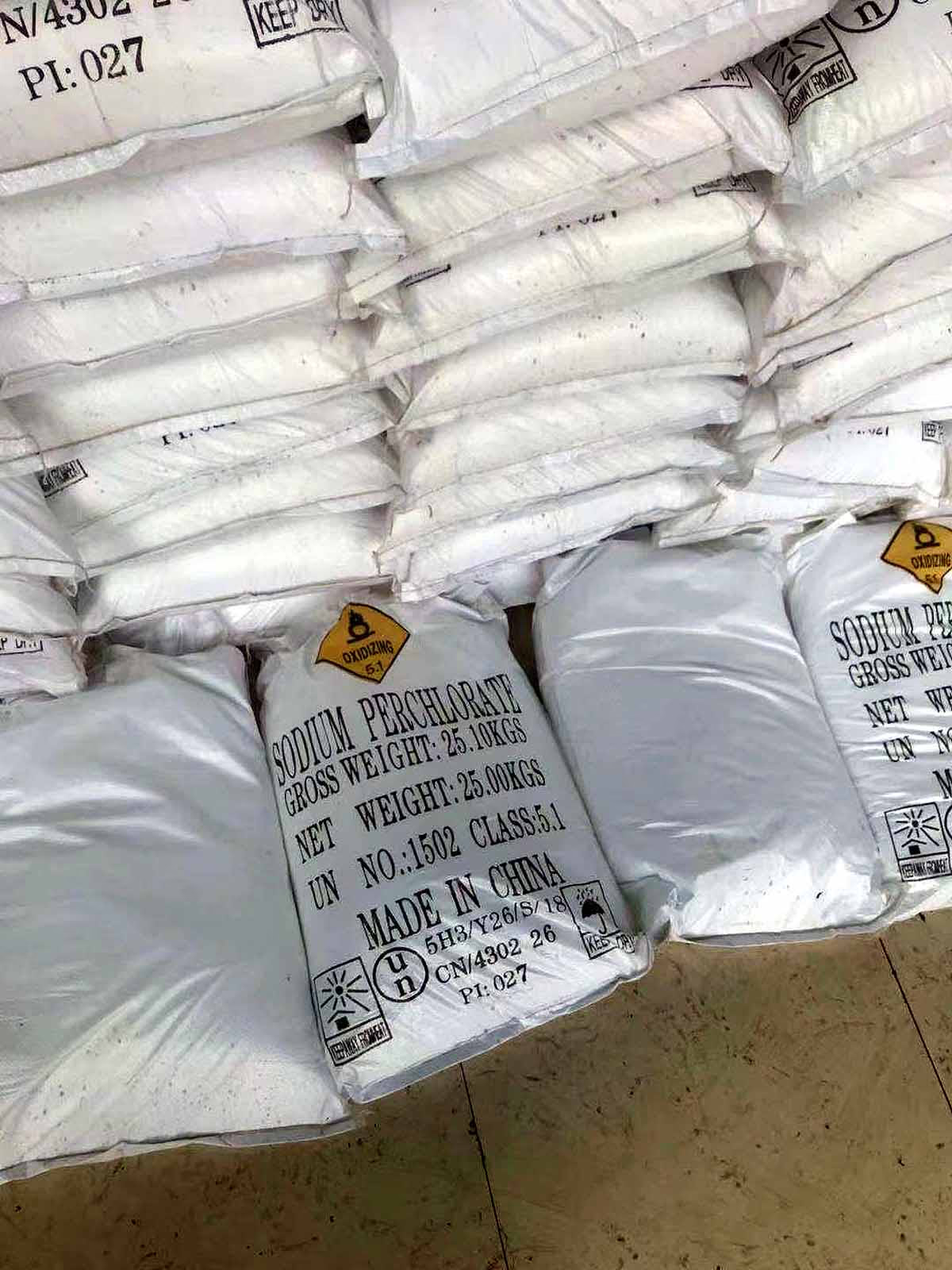
Source: aajtak
What is Sodium Perchlorate and Why is it Important?
Sodium perchlorate is a chemical compound, later transformed into ammonium perchlorate, a primary component of solid rocket fuel. It powers missiles and rockets, constituting up to 70% of solid propellants.
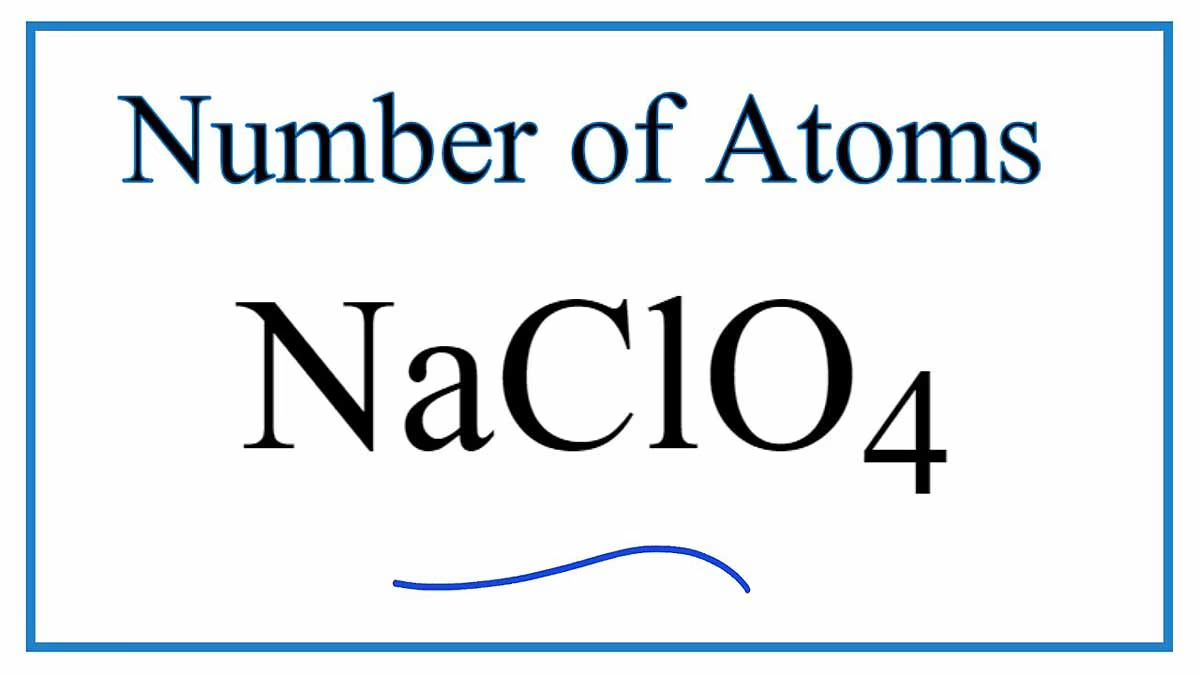
Source: aajtak
Usage:
Primarily used in ballistic missiles like Khyber Shekan, Fateh, and Hajj Qasem, it also has applications in fireworks and certain industrial processes, though such a substantial amount indicates military intentions.
Significance of the Quantity:
From 1,000 tons of sodium perchlorate, 960 tons of ammonium perchlorate can be made, resulting in 1,300 tons of propellant. This suffices for 260 Khyber Shekan or 200 Hajj Qasem missiles.
Importance:
Iran's missile production sites, like Parchin and Khojir, were damaged in Israeli attacks in October 2024. This shipment allows Iran to replenish its missile arsenal swiftly.
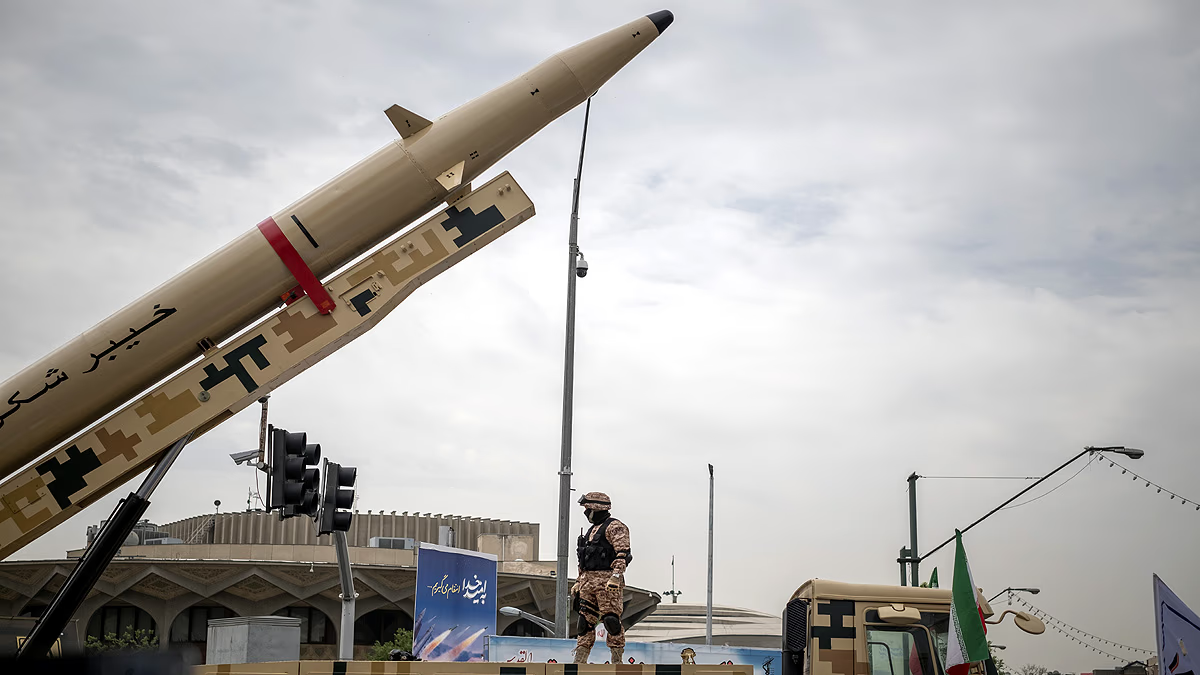
Source: aajtak
The Shipment's Journey to Iran
Loading and Departure
MV Golban set sail with 34 containers on January 21, 2025, from Daishan Island (East China Sea) and reached Bandar Abbas on February 14.
MV Jayran, carrying 24 containers, arrived in Bandar Abbas in March 2025, passing through the Strait of Malacca to get there by March 26.
Both vessels loaded near Taicang and Ningbo, while Golban also picked up additional cargo at Zhuhai Gaolan Port.
IRGC's Role
This shipment was destined for the IRGC's self-sufficiency Jihad Organization (SSJO), leading Iran's missile development. IRISL, owning the ships, is linked to the IRGC and previously implicated in smuggling military materials.
China's Response
China's Foreign Ministry stated lack of “specific knowledge” about this shipment. Sodium perchlorate isn't a controlled material. However, experts assert that China has supported Iran's missile program since the 1980s.
Regional and Global Impact
Threat to Israel:
With a 1,450 km range, the Khyber Shekan can reach Israeli cities like Tel Aviv and Haifa. The addition of 260 missiles could significantly enhance Iran’s offensive capabilities. Israel launched an attack on Iran's missile facilities in October 2024, destroying 12 planetary mixers.
Middle East Tensions:
Saudi Arabia and the UAE, previously targeted by Iran’s missile strikes, express concern over this shipment. Iran's allies, the Houthi rebels and Hezbollah, might utilize these missiles, exacerbating regional instability.
Russian Collaboration:
Iran exported Fateh-313 and Zolfaghar missiles to Russia, used in Ukraine. This shipment might aid Iran in manufacturing more missiles for Russia. On January 17, 2025, Russia and Iran signed a military cooperation agreement, excluding missile transfer mentions.
Shahid Rajaee Port Explosion:
On April 26, 2025, a blast occurred at Shahid Rajaee Port (near Bandar Abbas), killing 57 and injuring over 1,000. The New York Times reported that an IRGC source blamed sodium perchlorate for the explosion, as this shipment, arriving in March 2025, wasn’t transferred timely, leading to the mishap.
US and Western Reaction
The US imposed sanctions on IRISL, SSJO, and several Chinese companies (like Shenzhen Amor). The Missile Technology Control Regime (MTCR) regulates ammonium perchlorate, but sodium perchlorate remains unrestricted. US senators advocated stopping this shipment, yet no action was taken.
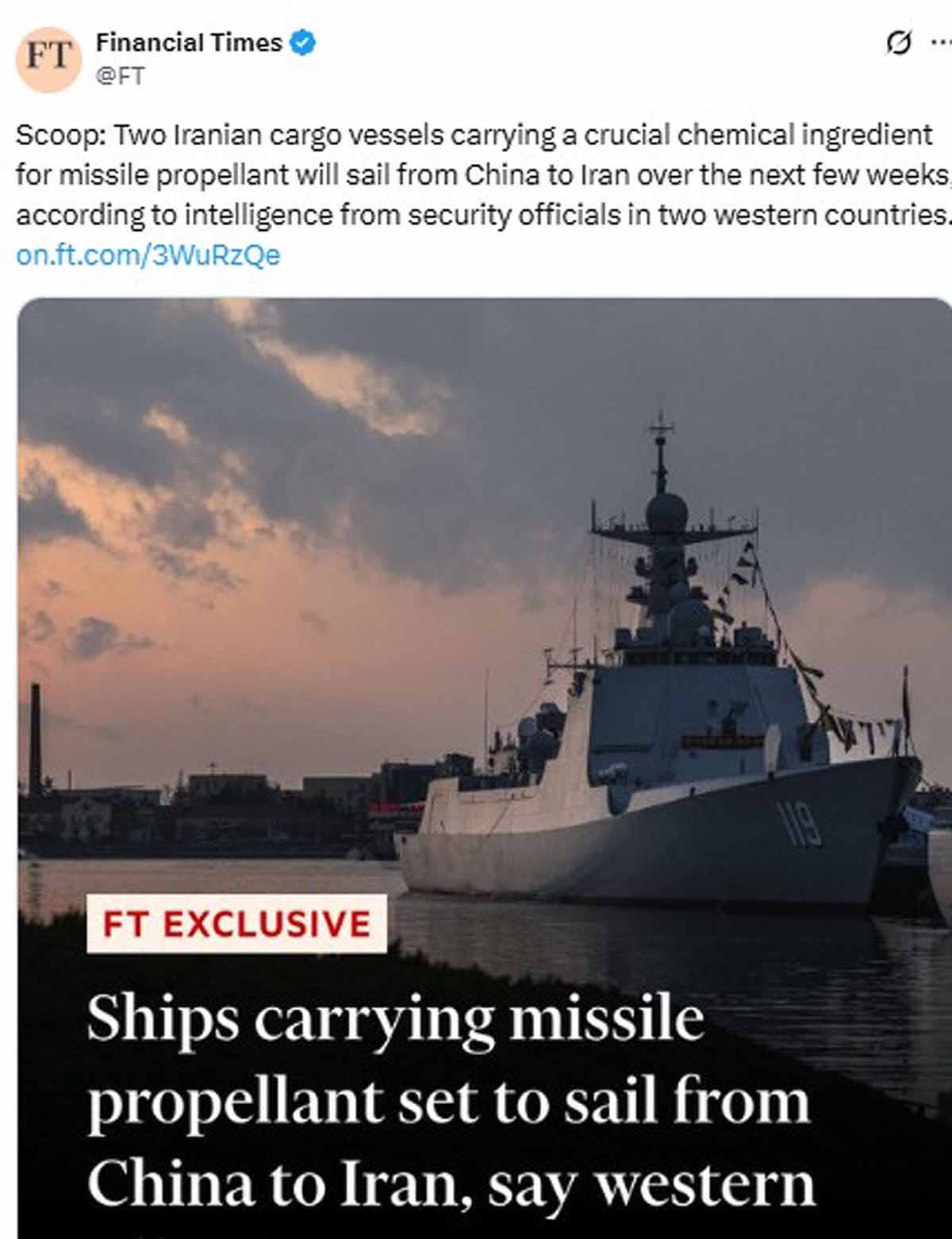
Source: aajtak
China's Role: Ally or Merchant?
Historical Support: Since the 1980s, China has bolstered Iran’s missile program. Iran’s anti-ship cruise missiles mirror Chinese designs.
Present Aid: This shipment highlights China’s strategic supply of materials, enhancing Iran’s missile power.
Diplomatic Stance: China labels it routine trade, asserting no rule violation. Yet experts see this shipment as part of China’s deeper alliance with Iran.
Bandar Abbas Explosion: Chinese nationals injured in the explosion suggest possible Chinese expert presence in Iran.
